Blustering wind with a frigid bite, big, fat fluffy snowflakes creating a haze in the air, and the sound of crunching snow as you run. Many of us adore winter, but running during the snowy season can be challenging. Snow and ice storms, temperatures unusually colder, shorter days, icy roads and paths, and low visibility can make running in the cold less than ideal.
How can we make running in the cold and motivation for goals stick during the drearier winter days? We have five fantastic tips for running in the cold and some ideas to motivate you to hit your goals. Let's put on our mittens and get to it!
Motivation: Find Your Why
As time passes and seasons change, so do we. Our goals should often be revisited and adapted to these changes. Determining your purpose for maintaining your fitness during the winter months offers an excellent starting point. Your why could be one of the following:
- To counteract winter weight gain
- To help your mood
- To stay healthy
- To get you ready for a spring marathon
- To socialize with your friends
Next, it's time to create goals that align with your why. People are likelier to stick with a plan if they set S.M.A.R.T. goals. For example, instead of developing a vague goal like "I'd like to run longer and faster," if you take the S.M.A.R.T approach, it would look like this, "I'd like to be able to run a 5k in under 26 minutes by March 28th."
In other words, your goal now becomes specific, measurable, achievable, results-focused, and time-bound. Once you've developed your big-picture S.M.A.R.T goal, you can work backward and set smaller milestones to achieve it. It's also a good idea to plan on celebrating small wins. This will help you to stay motivated on your fitness journey.
Routine Shake Up
Even the most committed (even crazy) fitness buff can have difficulty getting outside when it is so dark and cold in the mornings and evenings. If you find this a frequent challenge for you, consider exercising from the comfort (and warmth!) of your home. You can use equipment such as kettlebells, free weights, or a jump rope. Or you can do a workout DVD or even a virtual coaching session. Fitness expert Jessica Smith has a host of free workouts, including pilates, barre, and even indoor walking! Check them out HERE.
You can also consider swimming at your local community center or other indoor activities like rock climbing during winter.
These indoor workouts offer great cross-training opportunities for runners who want to avoid injury.
1. Dress For The Season & Safety
When you first step outside, you'll be cold. Once you start moving, your body temperature will rise, and those extra layers will overheat you. Take into account where you live. Wear fewer layers if it is cold but sunny, as you will warm up quickly. If it is dark and cold, then add a little more warmth.
Dress as though it is about 20 degrees warmer outside than it is. Since the winter cold often brings darkness, ensure you are easily viewable to a motorist. Wear reflective gear and bright colors.
Shorter days during winter may create a safety concern if your workout is outdoors. Fortunately, there are several precautions you can take to ensure you put safety first. As discussed on this episode of the Another Mother Runner Podcast, you must let drivers know you are a person (not a car or a bicycle).
- Get knuckle lights
- Wear highly reflective gear
Use safe earbuds or headphones. Be sure to get those that allow you to hear what you're playing on your phone and your surroundings.
Other safety tips include running with a partner, varying your routes, and running against traffic.
2. Warm Up
Before heading out on the run, get your body temperature up inside. This will help you regulate your temperature and dress for the run more appropriately. It will also help alleviate any tightness in your joints. Try a brisk warm-up that includes foam rolling, stretching, and walking to prepare your joints and heart for outdoor air.
3. Keep Your Hands, Feet, And Ears Warm
Cold weather can make extremities go numb. Avoid this by wearing proper gear. Wear gloves, warm socks, earmuffs, or a headband covering your ears.
Finding gear that wicks away sweat will also help you stay warm. Wet feet in freezing temperatures can be dangerous. Protect them with
Crazy Compression's moisture-wicking socks. Keep an extra pair on hand when you accidentally step into a puddle and need a quick change.
4. Know When To Cancel The Run
According to various experts, like the American College of Sports Medicine, -18 degrees Fahrenheit is the cutoff point for running outside. Of course, if the ground is covered in ice, tackle the treadmill instead to avoid slipping and causing an injury that will sideline your efforts.
Please pay special attention to your body and the signs it's giving you. The cold winter air can cause your muscles to tighten, shortness of breath, and even dizziness. If these occur, it's time to take a knee. Discuss with your doctor concerns such as chest pains, asthma attacks, and dizziness.
5. Change Your Clothes
Don't stay in your sweaty running clothes. As your body temperature begins to drop, you'll get cold quickly. Switch to warm, dry clothing as soon as you finish the run.
Running in the cold has its benefits. It wakes you up, improves energy levels, and gives you the extra edge in working towards your running goals before race season arrives. With the right gear, mindset, and attention to detail, a winter run may be exactly what you need!

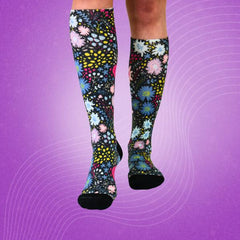

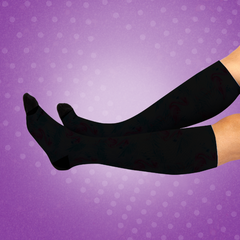

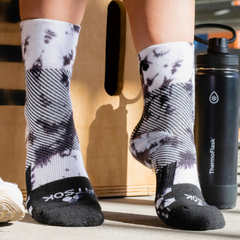
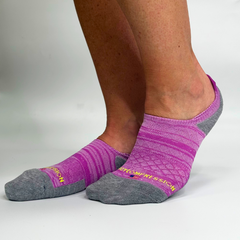


















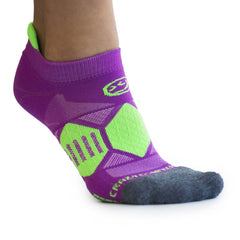







Leave a comment
This site is protected by hCaptcha and the hCaptcha Privacy Policy and Terms of Service apply.